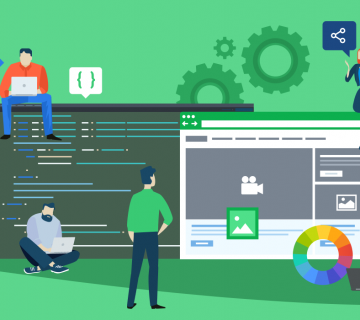While it may not be possible to absolutely eliminate the threat of hacking on your website, it certainly is possible to minimise the risk and thwart the attempts of all but the most intrepid perpetrators. For your own peace of mind as well as the protection of your customers and associates, you should take every possible precaution.
In much the same way that you take steps to safeguard your physical property, there are ways to make it more difficult for hackers to intrude on your web domain.

Dreaded Words: “I’ve Been Hacked”
In the digital marketplace, those words are spoken far too often: Statistics point to a hacking episode every five seconds worldwide. The severity of the episodes vary. The question is not if, but when and how bad it will be. It is imperative that you do everything possible to protect your online presence from tampering, and to protect the integrity of your website.
First, if you’re in the process of establishing a website, perform due diligence by comparing hosts. Select a reputable provider and install recommended plug-ins and basic security. Follow recommendations when choosing passwords, and select something meaningful and unique. Never be lax about signing in as administrator from an insecure site. And, never share your keys and passwords with others. Provide authorized users with their own unique sign-on protocols. And keep a master list so that you can cancel all access if necessary.
Simple Precautions Are the Best Protection
Sometimes, simple precautions are the best. However, they bear repeating. You’ve heard it all before:
- Always install the latest updates; ensure that all plug-ins on your site are also the most current versions;
- Back up your data on a regular basis;
- Make certain your passwords contain letters, numbers and symbols. Use a unique password for every account. Change your passwords on a regular basis;
- Do not neglect your anti-virus software; and
- Finally, be vigilant about what you share, where you share information, and how you share. The internet is a “minefield,” and you must be mindful of your interests
WordPress.org offers lists of security options. Even though WordPress itself performs an admirable service with its updates, you should check on some additional protection and take the steps you think might be necessary.
Look Into an SSL Certificate
So what is an SSL Certificate? An SSL Certificate typically is the mechanism by which you can “lock the door” to your organization’s important files and information. Used to secure credit card transactions online, to facilitate the transfer of secure data, and to allow secure logins, SSL certificates are becoming commonplace for browsing social media sites. An SSL Certificate installed onto a website can initiate secure sessions between web servers and browsers. The padlock symbol verifies that the connection is secure, and is a visible signal that you care about site security.
If you have ever known someone who has been hacked, you realize how disruptive it can be. The difference between “simple” hacking and the introduction of malicious malware that affects not only your site but your visitors and customers as well is the difference between night and day.
Google is quick to shut infected sites down, but it is always your responsibility to reconstruct and return your site to health. It is not easy and it is not fun! It is much smarter to “lock the door” in advance. Do your best to find the best SSL Certificate available




